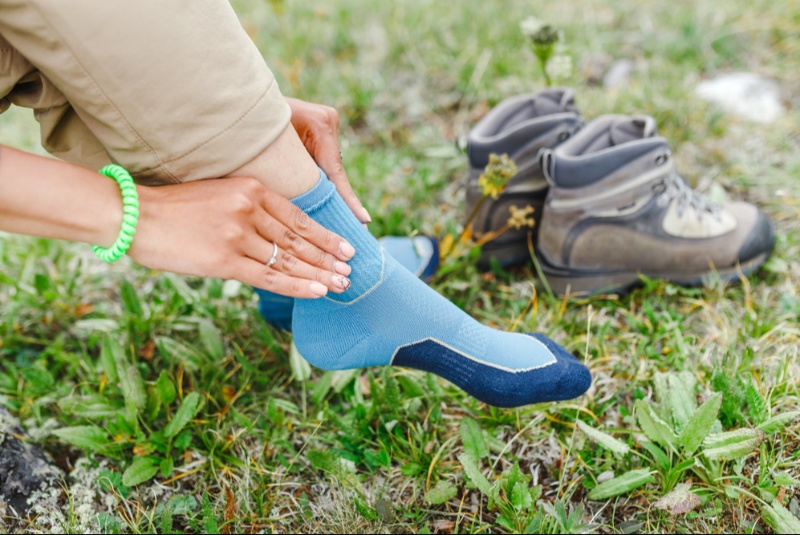Summer hiking is a favorite activity for outdoor enthusiasts, offering the opportunity to explore nature and enjoy the warm weather. However, the right gear is crucial for a comfortable and safe hiking experience, and socks play a pivotal role. This guide delves into the importance of choosing the right summer hiking socks, the features to look for, and tips for maintaining them. By selecting the best hiking socks, you can enhance your comfort, prevent blisters, and ensure a pleasant hike.
Importance of Summer Hiking Socks
Summer hiking socks are essential for keeping your feet comfortable and protected on the trail. They provide cushioning, wick away moisture, and help regulate temperature, all of which are crucial in preventing blisters and other foot issues. Unlike regular socks, hiking socks are designed to handle the rigors of outdoor activities, offering support and durability. Understanding the importance of summer hiking socks ensures you make an informed choice that enhances your hiking experience.
Choosing the Right Material
The material of your hiking socks plays a significant role in comfort and performance. Look for socks made from moisture-wicking fabrics like merino wool, synthetic blends, or bamboo. Merino wool is a popular choice because it is breathable, odor-resistant, and can regulate temperature. Synthetic blends often provide excellent durability and quick-drying properties. Choosing the right material ensures your feet stay dry, cool, and comfortable during your hike, reducing the risk of blisters and discomfort.
Cushioning and Padding
Cushioning and padding are essential features to consider in hiking socks, especially for long treks. Socks with reinforced heels and toes provide extra protection and durability in high-wear areas. Light to medium cushioning is generally sufficient for summer hikes, offering a balance between comfort and breathability. Cushioning and padding help absorb impact and reduce pressure on your feet, making each step more comfortable and protecting your feet from rough terrain.
Fit and Sizing
Proper fit and sizing are crucial for hiking socks to prevent blisters and ensure comfort. Socks that are too tight can restrict circulation, while those that are too loose can bunch up and cause friction. Measure your foot accurately and refer to the sizing guide provided by the sock manufacturer. A good fit ensures that the socks stay in place, providing consistent support and reducing the likelihood of blisters and other foot problems.
Breathability and Ventilation
Breathability is vital for summer hiking socks to keep your feet cool and dry. Look for socks with mesh panels or ventilation zones that allow air to circulate and wick away moisture. These features help regulate temperature and prevent sweat buildup, reducing the risk of blisters and fungal infections. Breathability and ventilation are essential for maintaining foot health and comfort on hot summer hikes.
Moisture-Wicking Properties
Moisture-wicking properties are crucial in hiking socks to manage sweat and keep your feet dry. Materials like merino wool and synthetic blends excel at pulling moisture away from your skin and dispersing it across the fabric's surface, where it can evaporate. This process helps prevent blisters and keeps your feet comfortable. Moisture-wicking properties ensure your feet stay dry, even during intense hikes in hot weather, enhancing overall foot health and comfort.

Anti-Blister Features
Blisters are a common issue for hikers, but choosing socks with anti-blister features can help prevent them. Look for seamless toe designs, which reduce friction points, and socks with additional padding in blister-prone areas. Some socks also incorporate materials that reduce friction, such as Teflon or silicon threads. Anti-blister features are essential for ensuring a pain-free hiking experience, allowing you to focus on enjoying the trail.
Odor Control
Hiking socks with odor control properties can keep your feet fresh, even after a long day on the trail. Merino wool naturally resists odor due to its antibacterial properties, while some synthetic socks are treated with antimicrobial agents. Odor control features are particularly important for multi-day hikes, where washing socks may not be feasible. Odor control ensures your feet remain fresh and reduces the risk of bacterial and fungal infections.
Durability and Longevity
Durability is a key consideration for hiking socks, as they need to withstand rough terrain and repeated wear. Look for socks with reinforced areas, such as the heel and toe, and high-quality stitching. Materials like merino wool and nylon blends often provide the best durability. Investing in durable socks ensures they last longer and provide consistent performance, offering better value for your money.
Maintenance and Care
Proper maintenance and care can extend the life of your hiking socks. Follow the manufacturer's washing instructions, typically recommending cold water and gentle cycles. Avoid using bleach or fabric softeners, as these can degrade the fabric. Air dry your socks to maintain their shape and elasticity. Regular maintenance and care keep your socks in optimal condition, ensuring they provide the necessary support and comfort for many hikes to come.
Cost vs. Value
While high-quality hiking socks may come with a higher price tag, they often offer better performance and longevity. Consider the cost versus the value provided by the socks. Investing in a few pairs of high-quality socks can be more cost-effective than frequently replacing cheaper, less durable options. Cost vs. value analysis helps you make a smart investment that enhances your hiking experience and provides better long-term value.
Popular Brands and Recommendations
Several brands are known for their high-quality hiking socks. Brands like Darn Tough, Smartwool, and Icebreaker offer a range of options designed for different hiking conditions. These brands are praised for their durability, comfort, and performance features. Reading reviews and seeking recommendations from fellow hikers can help you choose the best socks for your needs. Popular brands and recommendations provide a starting point for finding the right hiking socks to enhance your trail experience.
Choosing the right summer hiking socks is crucial for a comfortable and enjoyable hiking experience. By considering factors such as material, cushioning, fit, breathability, and durability, you can select socks that meet your specific needs. Anti-blister features, odor control, and proper maintenance further enhance the performance and longevity of your socks. Investing in high-quality hiking socks from reputable brands ensures you can tackle any trail with confidence, comfort, and protection. Embrace these tips and enjoy your summer hikes with the best gear for your feet.




